Mauritania
Discover Mauritania
Mauritania is a country in the Maghreb region of western North Africa. It is the eleventh largest sovereign state in Africa and is bordered by the Atlantic Ocean to the west, Western Sahara to the north and
northwest, Algeria to the northeast, Mali to the east and southeast, and Senegal to the southwest. The capital and largest city is Nouakchott, located on the Atlantic coast.
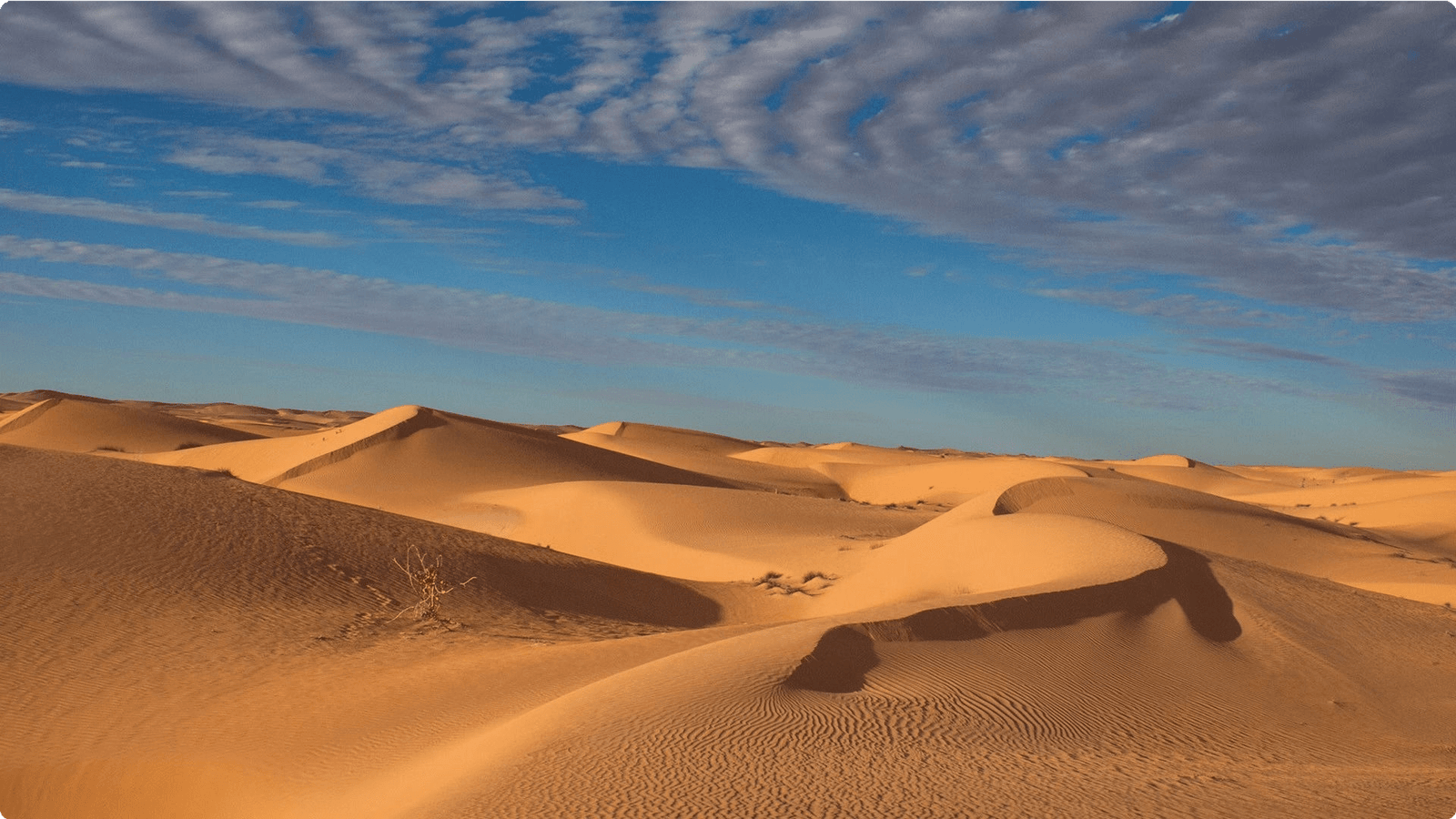
Mauritania’s landscapes include the Sahara desert, mountains, and plateaus, offering a diverse range of natural beauty. The country’s rich history, unique culture, and fascinating traditions make it a captivating destination for travelers seeking an authentic African experience.
Flag of Mauritania
The national flag of Mauritania consists of a green field with a golden crescent and star in the center. The green color represents Islam, the official religion of the country, while the crescent and star are traditional symbols of the Islamic faith. The flag’s design also symbolizes the land and sky, with green representing fertility and gold representing the Sahara desert. The current design was adopted in 2017, and it holds significant cultural and religious meaning for the people of Mauritania. The flag is a representation of the nation’s history, values, and identity.
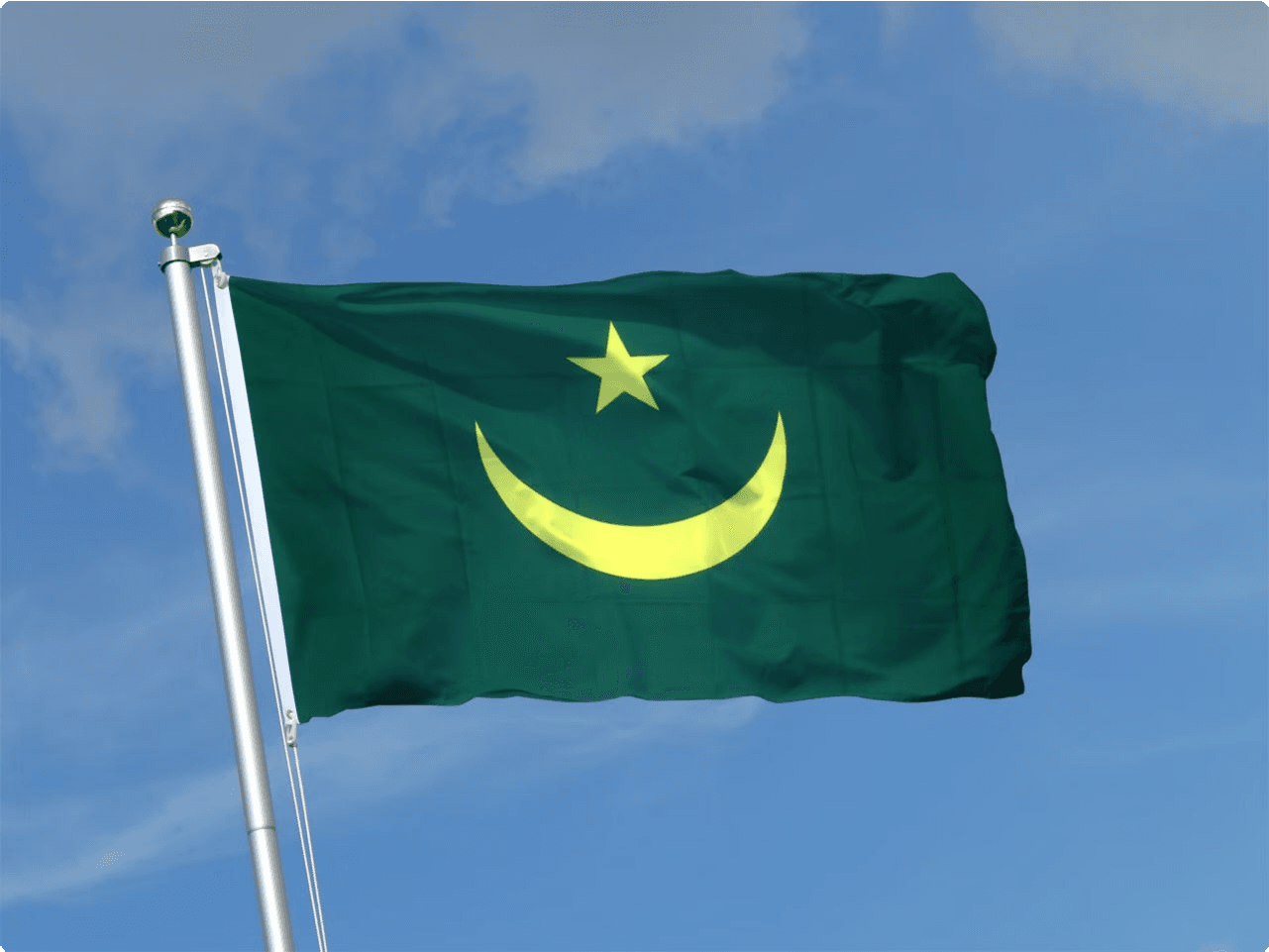
Map of Mauritania
The map of Mauritania provides an overview of the country’s geographical features, boundaries, and major cities. It showcases the diverse landscapes of Mauritania, including the Sahara Desert, the Atlantic coastline, and the Adrar Plateau.
By referring to the map, you can get a sense of the country’s vastness and its location within Northwest Africa. It helps in understanding the neighboring countries and their proximity to Mauritania.
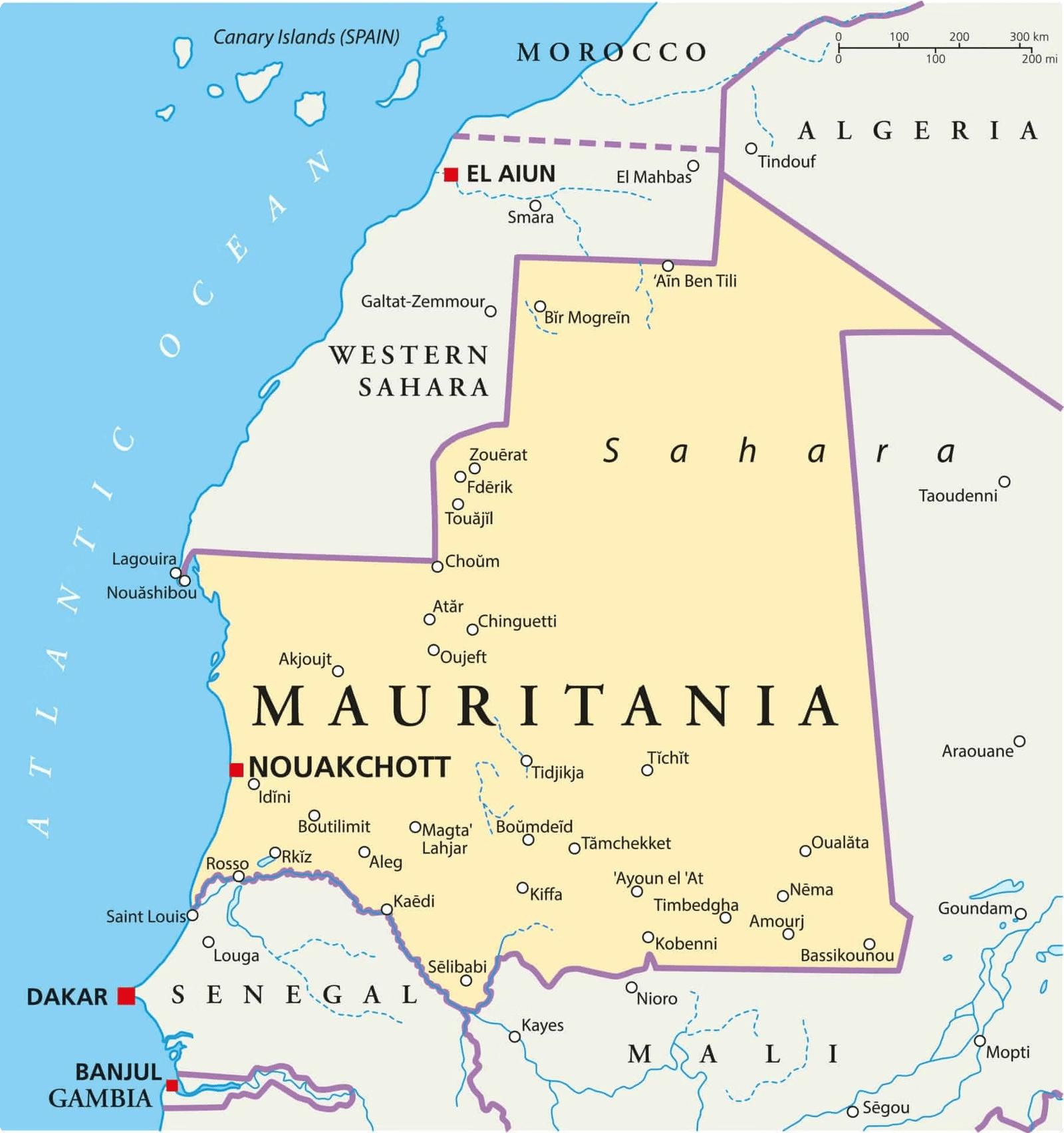
Additionally, the map highlights the major cities of Mauritania, such as Nouakchott, the capital city, Nouadhibou, Atar, Chinguetti, Ouadane, Kaédi, Rosso, Tidjikja, and Zouérat. These cities offer unique cultural experiences and have their own historical significance.
Furthermore, the map can be a useful tool for travelers planning to visit Mauritania. It helps in identifying key tourist attractions like the Banc d’Arguin National Park, Adrar Plateau, Terjit Oasis, Chinguetti Mosque, and Port de Peche de Nouadhibou. These places offer opportunities for adventure, exploring nature, and immersing in the rich cultural heritage of Mauritania.
Whether you’re interested in understanding the country’s geography, planning a trip, or simply exploring the various regions of Mauritania, the map serves as an essential reference.
Currency of Mauritania
Official Currency
The official currency of Mauritania is the Mauritanian ouguiya (MRO). It is abbreviated as MRU and is named after the ancient unit of currency used in the Sahara.
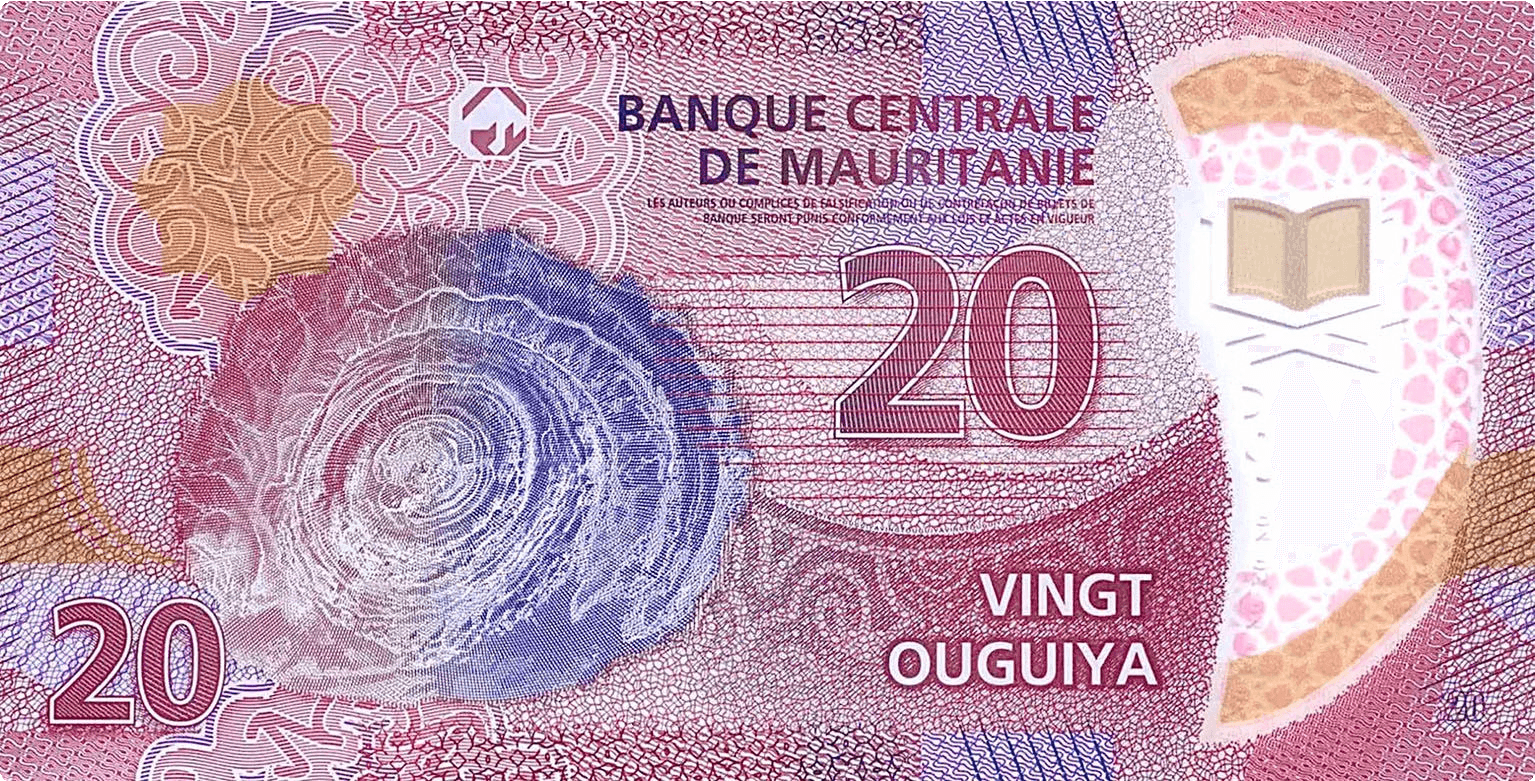
Banknotes and Coins
The ouguiya is further divided into smaller units called khoums. Banknotes in circulation are denominated in 100, 200, 500, 1000, 2000, and 5000 ouguiya, while coins are available in denominations of 1, 5, 10, 20, and 50 ouguiya.
Exchange Rate
The exchange rate of the Mauritanian ouguiya fluctuates and is influenced by various economic factors. It is advisable for travelers to check the current rates before exchanging currency.
Economy of Mauritania
Main Industries: Mauritania’s economy is predominantly based on agriculture, fishing, mining, and the production of iron ore which is a major source of revenue.
Trade Partners: The country has strong trade ties with the European Union, China, and other African countries. Its main exports include iron ore, gold, and fish.
Challenges: Despite its rich natural resources, Mauritania faces economic challenges such as high unemployment rates, insufficient infrastructure, and a significant portion of the population living below the poverty line.
Culture of Mauritania
Traditional Clothing: The traditional dress of Mauritania reflects the country’s rich cultural heritage. Both men and women wear flowing garments, with men often donning the “boubou,” a loose-fitting robe, and women wearing brightly colored “melafa” wraps.
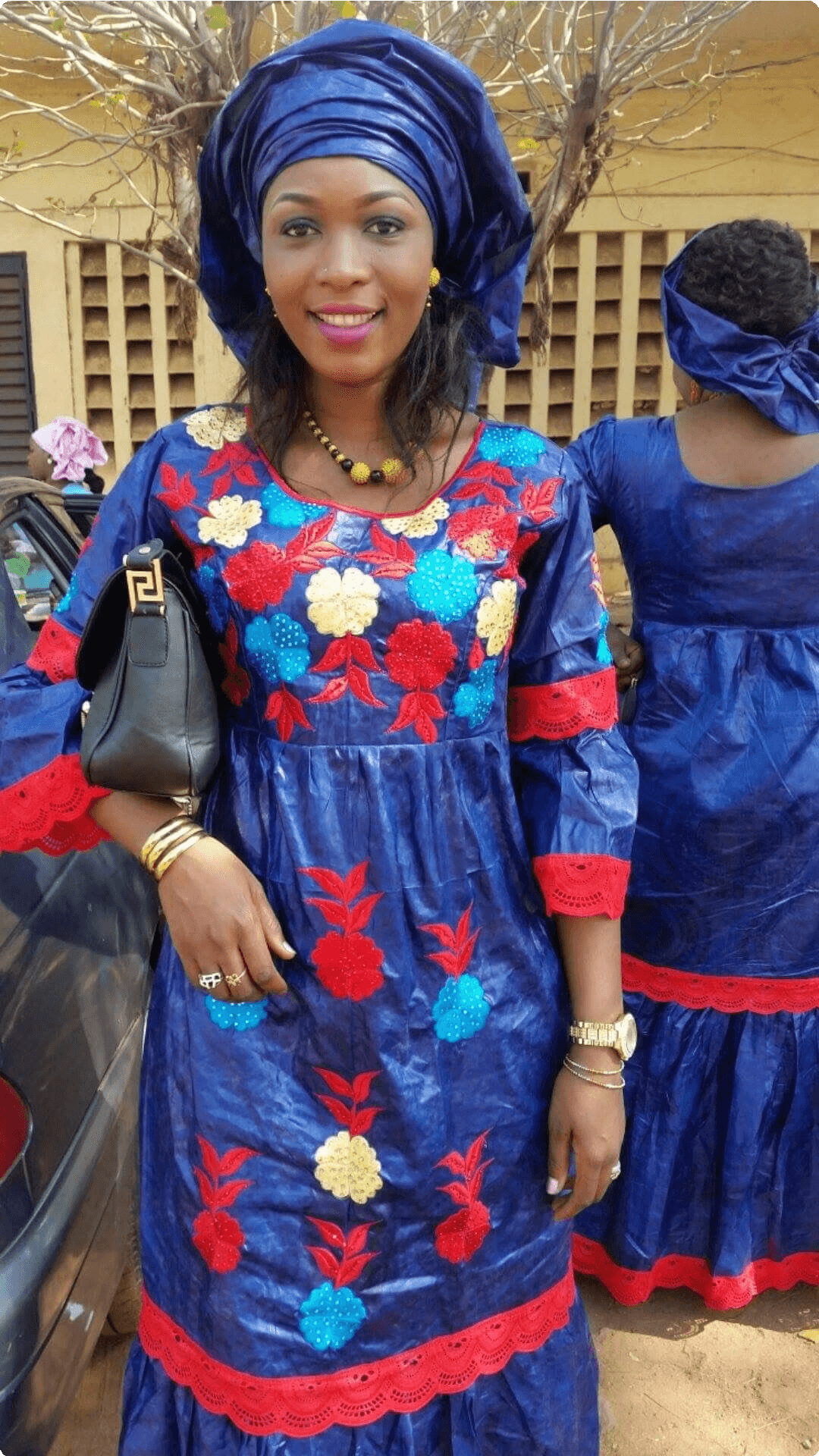
Hospitality: Mauritanians are known for their warm hospitality. It is customary to offer guests sweet mint tea as a sign of welcome, and hospitality plays a central role in Mauritanian culture.
Art and Crafts: Artisans in Mauritania are skilled at creating intricate silver jewelry, traditional handwoven textiles, and decorative wood carvings, reflecting the country’s artistic prowess.
Nomadic Lifestyle: Many Mauritanians still maintain a nomadic lifestyle, traversing the desert with their herds of camels and preserving age-old customs and traditions.
Traditional Dances in Mauritania
Mauritania’s traditional dances are an integral part of its rich cultural heritage, showcasing the vibrant and diverse traditions of the Mauritanian people. One of the most well-known traditional dances is the “El-Hal” dance, which is performed during special occasions and celebrations. The dance is characterized by rhythmic movements and colorful attire, reflecting the joy and unity of the community.
Another prominent dance is the “Nouakchott Dance,” which originated in the capital city and features dynamic movements and intricate footwork. It is often accompanied by traditional music, creating an immersive experience for spectators. Additionally, the “Toucouleur Dance” is a captivating display of Mauritanian culture, with its graceful movements and historical significance.
Traditional food in Mauritania
Thieboudienne: This is a popular fish and rice dish, where the fish is cooked with various vegetables and served with flavorful rice. It’s a staple in Mauritanian cuisine and is usually enjoyed with a spicy tomato sauce.

El Boulet: A delicious meatball dish made with minced meat, onions, and a blend of aromatic spices. It’s often served with couscous and a side of vegetables, providing a hearty and flavorful meal.
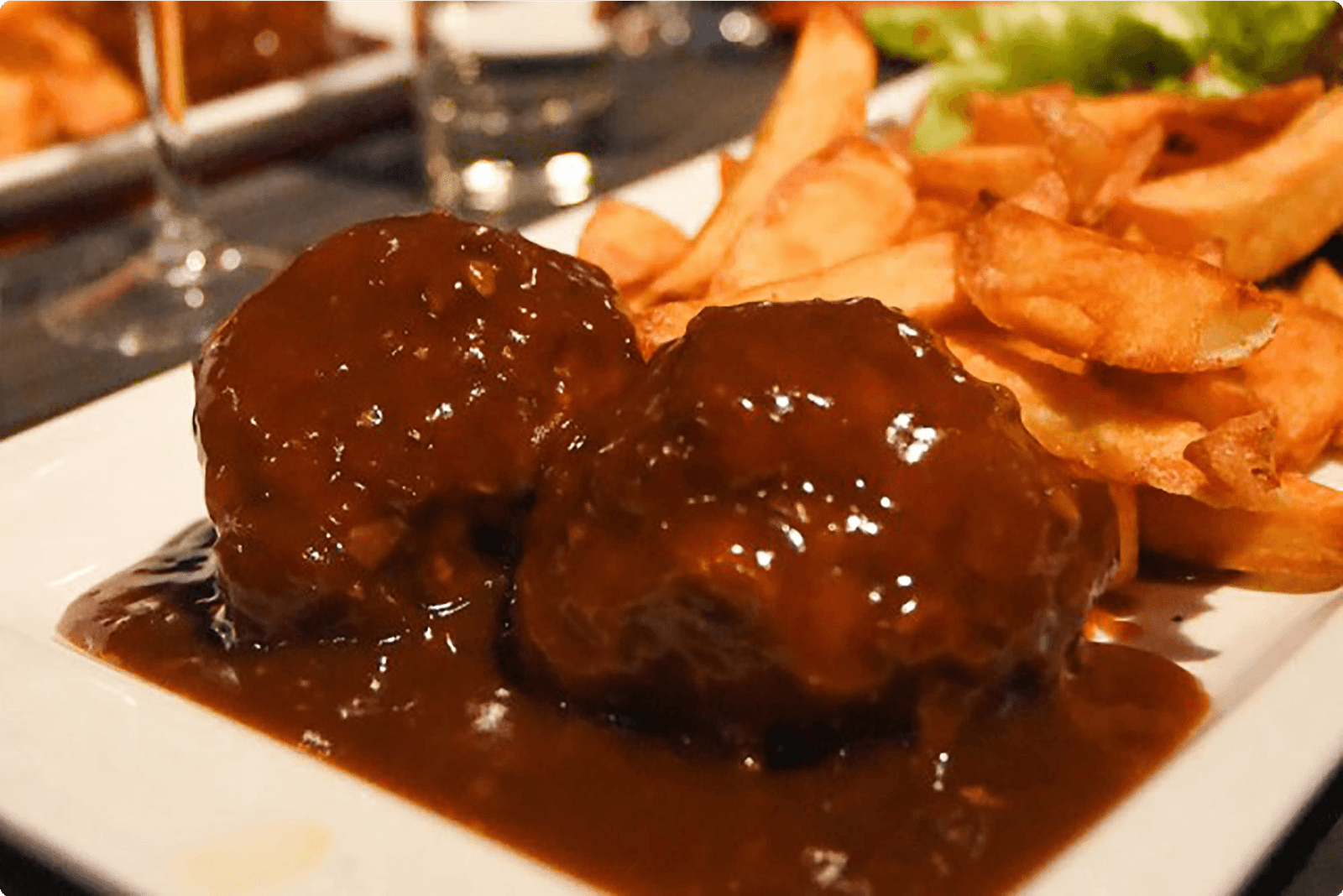
Tea: In Mauritania, tea is a cherished tradition. The mint tea, known as “ataiya,” is prepared with green tea leaves, fresh mint, and an enticing amount of sugar. The ritual of preparing and sharing tea holds great cultural significance.

Choukchouka: A savory and spicy dish made with eggs, tomatoes, bell peppers, and a medley of aromatic spices. It’s often enjoyed for breakfast or as a satisfying snack.

Famous Celebrities from Mauritania
Noura Mint Seymali
Noura Mint Seymali is an acclaimed Mauritanian musician known for her soul-stirring fusion of traditional Moorish music with contemporary sounds. Her unique musical style has garnered widespread praise, earning her a place among the most influential musicians in Africa.
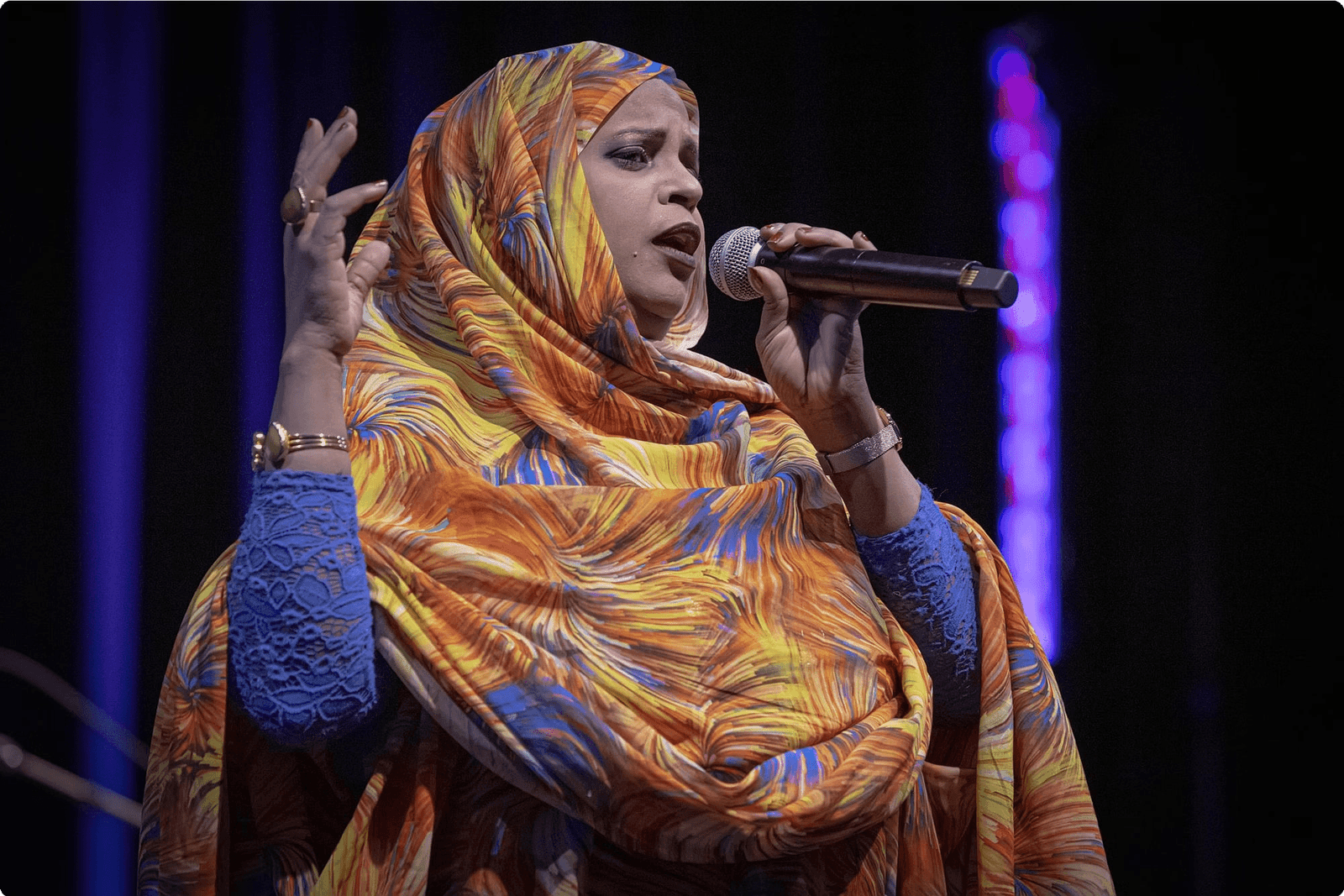
Mohamedou Ould Slahi
Mohamedou Ould Slahi is a renowned Mauritanian author whose memoir, “Guantánamo Diary,” gained international acclaim for its powerful account of his imprisonment in Guantanamo Bay. His poignant writing has brought significant attention to human rights issues and has made a profound impact on global audiences.

Best cities to visit in Mauritania
Nouakchott: The capital and largest city of Mauritania, Nouakchott is known for its lively markets, beautiful beaches, and vibrant cultural scene. Visitors can explore the National Museum, the Port de Peche, and enjoy the traditional Moorish architecture.
Nouadhibou: A major Mauritanian city known for its bustling fishing port and vibrant art scene. Visitors can enjoy the sandy beaches, explore the ship graveyard, and visit the National Arts and Ethnography Institute.
Atar: Located near the Adrar Plateau, Atar is an oasis city with stunning landscapes, ancient architecture, and rich cultural heritage. Tourists can experience traditional Saharan life, visit local markets, and explore ancient ksour.
Chinguetti: The ancient desert town of Chinguetti is a UNESCO World Heritage Site, famous for its historic libraries, ancient mosque, and unique desert architecture. Visitors can enjoy camel trekking, explore the old town, and experience the tranquility of the desert.
Ouadane: A picturesque desert town with a rich history, Ouadane is known for its well-preserved medieval architecture, ancient fortresses, and stunning desert landscapes. Tourists can visit the old town, explore the Chinguetti Mosque, and immerse themselves in the history of the Sahara.
Kaédi: Situated on the Senegal River, Kaédi is a vibrant city known for its colorful markets, historical sites, and beautiful natural surroundings. Visitors can explore the colonial architecture, take boat trips on the river, and experience the local festivals and traditions.
Rosso: A charming river town on the Senegal River, Rosso is famous for its colorful markets, traditional fishing villages, and bustling river port. Tourists can visit the Sabou Ciré Island, experience the local culture, and explore the scenic riverfront.
Tidjikja: Located in the heart of the desert, Tidjikja is a picturesque town with a rich Saharan heritage, stunning landscapes, and ancient architecture. Visitors can explore the old town, experience traditional Saharan life, and take 4×4 excursions into the desert dunes.
Zouérat: A city in the Sahara Desert known for its iron mining industry, Zouérat offers unique insights into the mining operations, stunning desert landscapes, and rich cultural experiences. Tourists can visit the mining sites, explore the desert surroundings, and engage with the local communities.
Nouakchott
Nouakchott is the capital and largest city of Mauritania, known for its distinctive blend of modern and traditional architecture. With its vibrant markets, bustling streets, and lively street food scene,
Nouakchott offers a unique insight into Mauritanian culture and daily life. The city is also home to
important cultural institutions, such as the National Museum of Mauritania, showcasing the rich heritage and history of the country. Visitors to Nouakchott can explore the charming beaches along the Atlantic coast, with opportunities for fishing and water sports. The city’s warm and hospitable locals add to its appeal, making it a must-visit destination for those seeking an authentic Mauritanian experience.
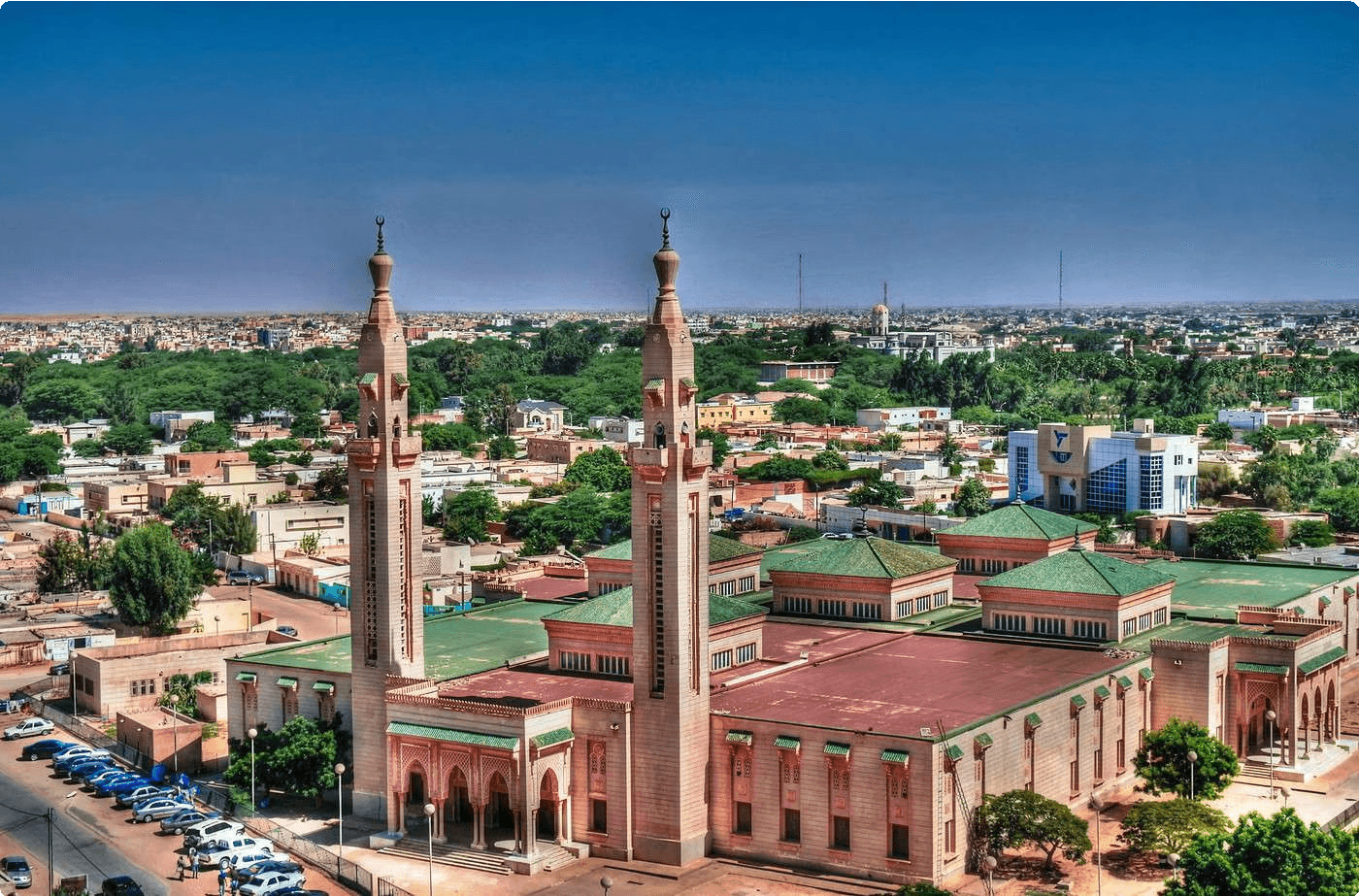
Experience the captivating blend of contemporary urban life and traditional Mauritanian culture in Nouakchott, where colorful markets, historical landmarks, and culinary delights await.
Nouadhibou
Nouadhibou is the second largest city in Mauritania and is known for its bustling port and fishing industry. The city serves as an important economic hub and is a gateway to the country’s rich maritime resources.
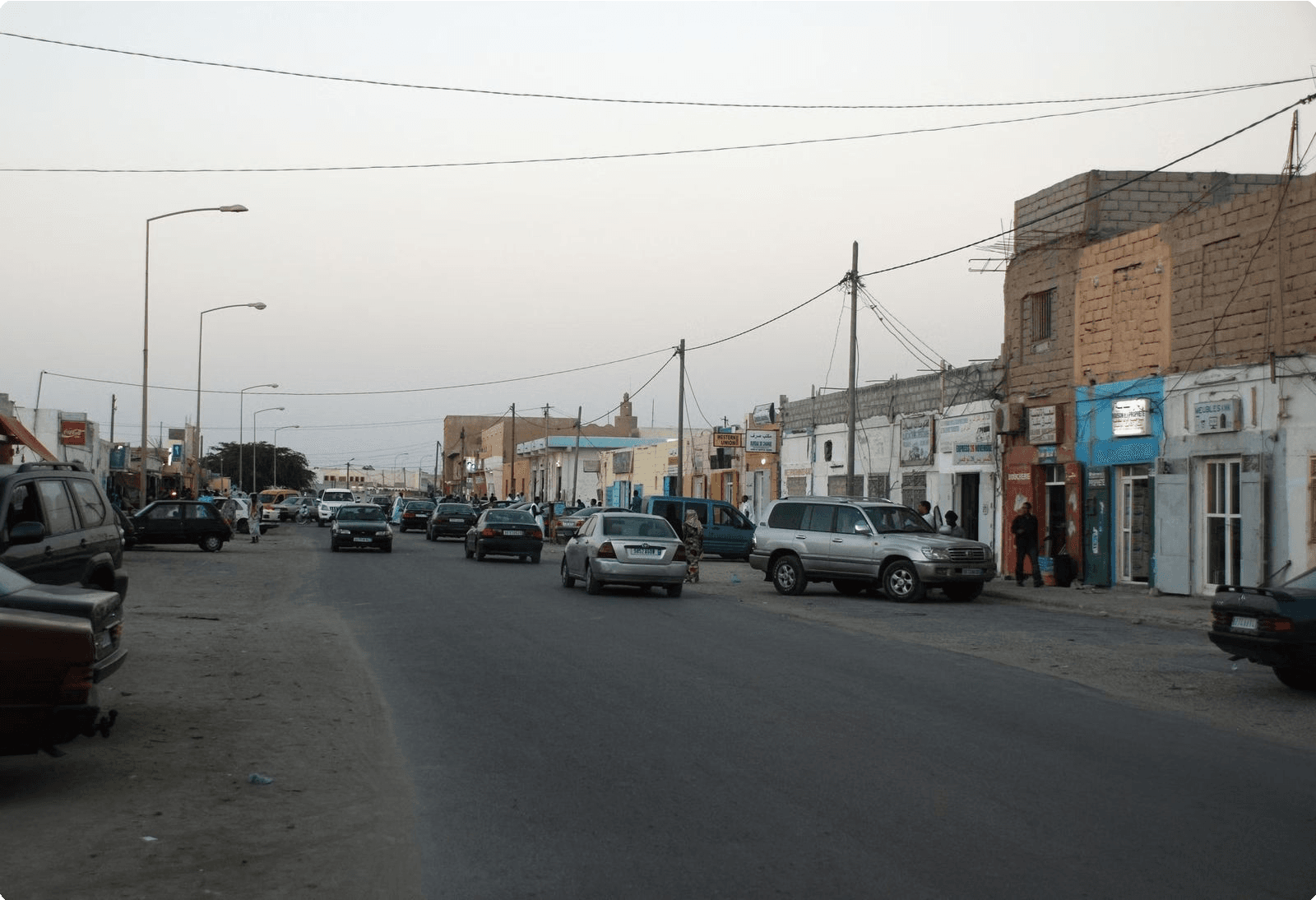
The city is also home to the Banc d’Arguin National Park, a UNESCO World Heritage site famous for its diverse bird species, stunning coastal landscapes, and the opportunity to witness the traditional fishing practices of the Imraguen people.
Nouadhibou’s vibrant markets, where fresh seafood and local handicrafts can be found, offer visitors a glimpse into the daily life and culture of the Mauritanian people.
Atar
Historical City: Atar is a historical city located in the Adrar Plateau region of Mauritania. It is known for its rich cultural heritage and ancient architecture.
Chinguetti Libraries: Atar is home to the famous Chinguetti Libraries, which are considered to be some of the oldest in the world, housing a vast collection of ancient Islamic texts.
Landscape: The city is surrounded by stunning desert landscapes, with dramatic cliffs and rock formations creating a picturesque setting for visitors.
Chinguetti
Historical Importance: Chinguetti is one of the most important historical cities in Mauritania, known for its ancient libraries and well-preserved architecture.
Library of Chinguetti: It is home to one of the earliest and most extensive library collections in West Africa, holding ancient manuscripts and texts that date back centuries.
Architecture: The city is famous for its distinct desert architecture, with mud-brick houses and mosques that showcase the traditional Saharan building style.
Ouadane
Ouadane is an ancient town in the desert region of Mauritania, known for its historical significance as a former trading post on the trans-Saharan trade route.
The town is characterized by its distinct architecture, including traditional Saharan-style houses and structures made of local stone and mud.
Visitors to Ouadane can explore the well-preserved ruins of the old town, including the ancient mosque and the remains of fortified walls, providing a glimpse into the town’s storied past.
Kaédi
Scenic River Senegal: Kaédi, located on the banks of the majestic River Senegal, offers breathtaking views of the serene waters and the surrounding natural beauty.
Colorful Markets: The vibrant local markets of Kaédi are a treat for the senses, offering a spectrum of colorful textiles, fresh produce, and local crafts.
Rich History: Kaédi boasts a rich historical heritage, with ancient structures and landmarks that narrate the story of the city’s past, making it a fascinating destination for history enthusiasts.
Rosso
Historical Heritage: The town of Rosso, located on the Senegal River, is known for its rich historical heritage and its significance as a major river port.
Cultural Diversity: Rosso is renowned for its diverse cultural influences, with a blend of Mauritanian, Senegalese, and other West African traditions.
Colorful Market: Visitors can explore the vibrant local market, where a variety of goods and local crafts are on display, offering a glimpse into the daily lives of the people in Rosso.
Tidjikja
Historic Town: Tidjikja, located in the Tagant region of Mauritania, is a historic town that dates back to the 17th century. It is known for its traditional architecture and ancient structures that reflect the rich history of the region.
Cultural Significance: The town holds great cultural significance as it has been a center for traditional practices, music, and art. Visitors can immerse themselves in the authentic local culture and witness traditional ceremonies and rituals.
Scenic Surroundings: Tidjikja is surrounded by stunning desert landscapes and picturesque sand dunes, offering visitors a unique and beautiful natural setting to explore.
Zouérat
Location: Zouérat is a city located in the northern part of Mauritania, near the border with Western Sahara.
Mining Town: The city is known for its iron ore mining operations, which play a significant role in the economy of Mauritania.
Natural Beauty: Despite its industrial significance, Zouérat is surrounded by stunning desert landscapes, offering unique opportunities for exploration and photography.
Places to Travel in Mauritania
Mauritania offers a unique and diverse range of travel destinations, each with its own distinct charm and allure. From breathtaking natural landscapes to historical sites of cultural significance, this West African country has much to offer to adventurous travelers.
One of the must-visit places is the Banc d’Arguin National Park, a UNESCO World Heritage site known for its vibrant biodiversity and stunning coastal scenery. The Adrar Plateau, with its dramatic rock formations and ancient cave paintings, is another captivating destination for nature enthusiasts and history buffs alike.

The Terjit Oasis, nestled amidst desert dunes, provides a tranquil and picturesque retreat for those seeking a serene escape. The Chinguetti Mosque, a symbol of Islamic architecture and scholarship, stands as a testament to Mauritania’s rich cultural heritage.
Lastly, the Port de Peche de Nouadhibou offers a glimpse into the livelihoods of local fishermen along the Atlantic coast, providing an authentic and vibrant experience of Mauritanian coastal life.
Banc d’Arguin National Park
Banc d’Arguin National Park is a stunning coastal and marine park located in the west of Mauritania, along the Atlantic coast. It is renowned for its diverse ecosystems, including extensive tidal flats, coastal sand dunes, small islands, and shallow coastal waters, making it a haven for a wide variety of wildlife.
The park serves as a vital nesting and wintering site for migratory birds, with over 2 million birds from Europe, Siberia, and Greenland making their way here annually. Among the species that can be spotted are flamingos, terns, pelicans, and various wading birds. The park’s waters are equally rich, providing a sanctuary for marine life, including dolphins, manatees, and numerous species of fish and crustaceans.
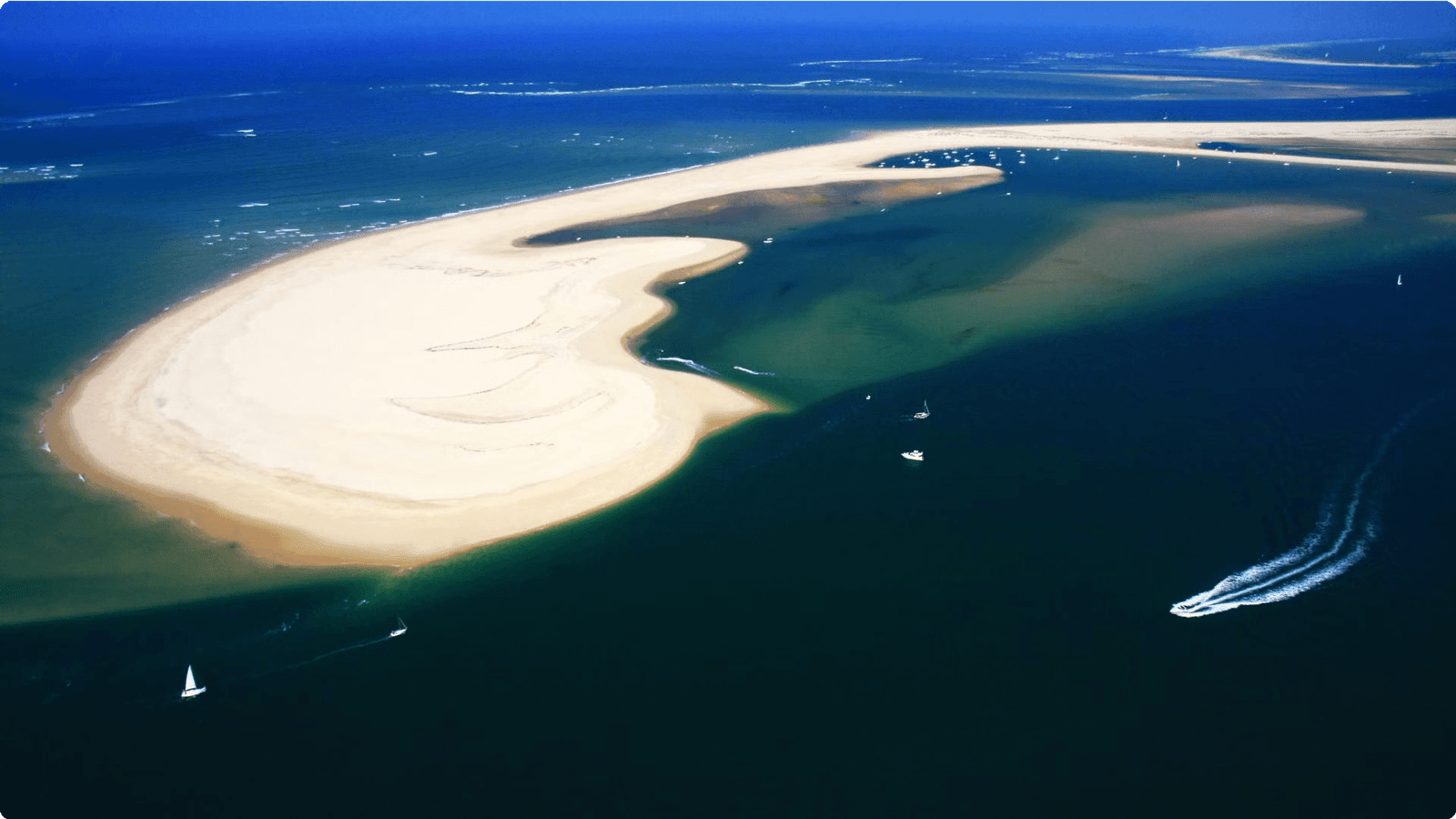
The park also holds great cultural significance as it has been inhabited by humans for thousands of years. The traditional lifestyle of the Imraguen people, who rely on fishing and traditional salt collection, adds a cultural dimension to the park’s natural beauty.
Visitors to Banc d’Arguin National Park can indulge in activities such as birdwatching, photography, boat tours, and learning about the unique traditional practices of the Imraguen community. The park’s breathtaking landscapes and rich biodiversity make it a must-visit for nature enthusiasts and conservationists.
For a truly immersive experience, exploring the park with knowledgeable local guides can provide deep insights into the ecological and cultural wonders that make Banc d’Arguin National Park an extraordinary destination.
Click here for more pictures.
Adrar Plateau
The Adrar Plateau in Mauritania is a vast expanse of rocky desert, characterized by stunning landscapes and unique geological formations. This area is known for its dramatic cliffs, deep gorges, and breathtaking canyons, offering a surreal and mesmerizing experience for visitors.
The plateau is home to a rich diversity of flora and fauna, with hardy plants and rare species adapted to the harsh desert environment. Visitors can witness the resilience of life in this challenging ecosystem, making it a paradise for nature enthusiasts and photographers.
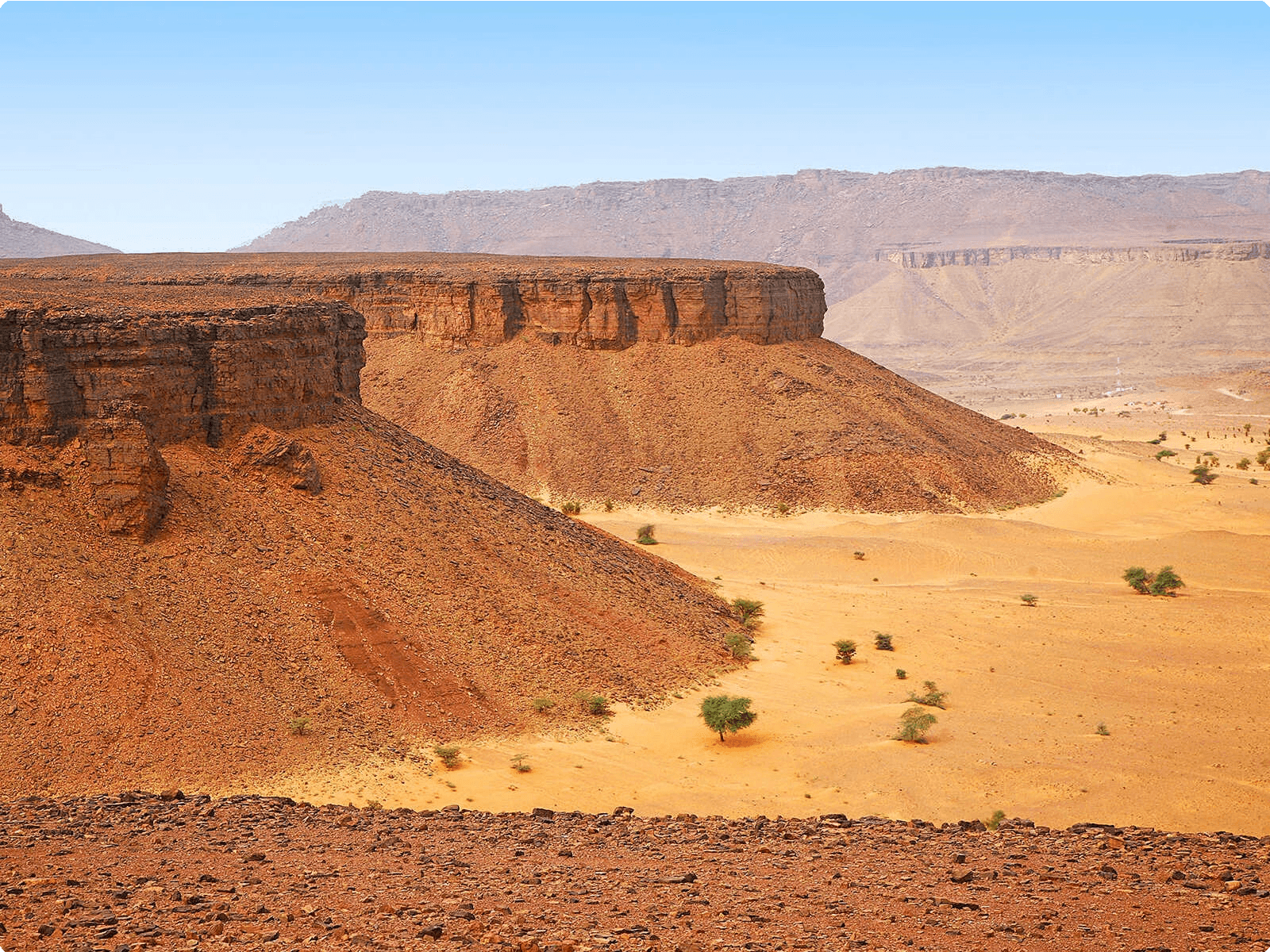
Exploring the Adrar Plateau allows travelers to immerse themselves in the cultural heritage of Mauritania, encountering ancient rock art, traditional settlements, and historical landmarks that provide insights into the country’s rich history and indigenous traditions.
For adventure seekers, the Adrar Plateau offers opportunities for hiking, rock climbing, and camel trekking, providing an exhilarating and immersive experience in the heart of Mauritania’s rugged beauty.
Terjit Oasis
The Terjit Oasis, located in the Adrar region of Mauritania, is a breathtaking paradise amidst the desert landscape. This verdant haven is known for its serene pools of crystal-clear water, surrounded by palm trees and vibrant vegetation. Visitors often describe the oasis as a tranquil retreat, offering a sense of peace and tranquility that is rarely found elsewhere.
The oasis is a popular destination for travelers seeking respite from the arid climate, and it provides a stunning backdrop for relaxation and exploration. The cool waters of the oasis, shaded by the lush greenery, offer a refreshing escape from the desert heat and a chance to immerse oneself in the beauty of nature.
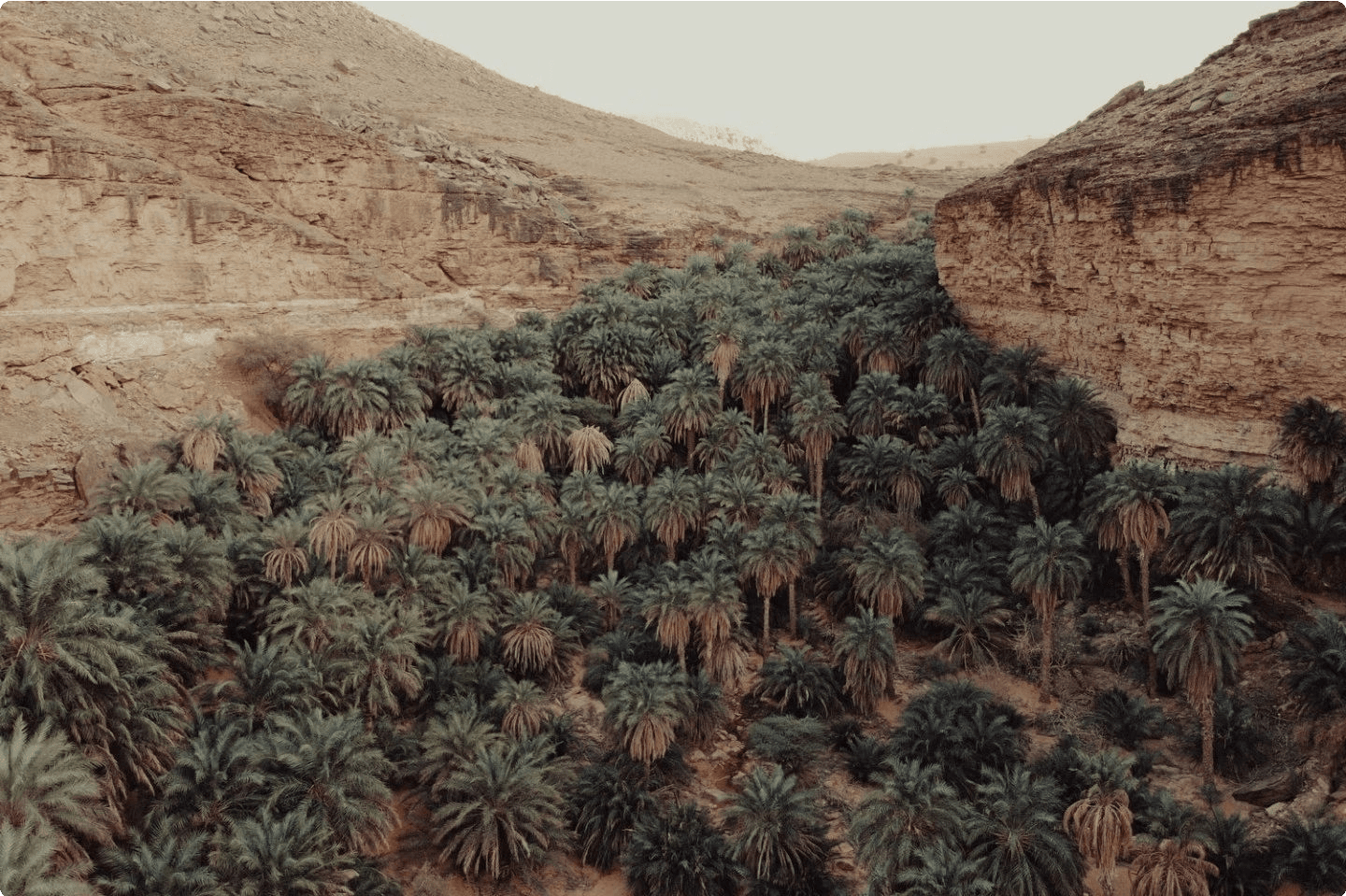
Exploring the surroundings of the Terjit Oasis reveals hidden gems, such as natural rock formations and picturesque landscapes. The striking contrast between the lush oasis and the surrounding desert dunes creates a mesmerizing scene that captivates all who visit. For adventure enthusiasts, there are opportunities for hiking, photography, and experiencing the local culture.
Visitors can enjoy traditional Mauritanian hospitality at the nearby campsites, where they can relax under the starlit sky and savor authentic cuisine. The Terjit Oasis stands as a testament to the natural wonders of Mauritania, inviting travelers to embark on a truly unforgettable journey.
Chinguetti Mosque
The Chinguetti Mosque is an ancient structure located in the old town of Chinguetti, Mauritania. It is considered one of the oldest and most important mosques in the country, having been built in the 13th century. The mosque is a key example of the unique Saharan architectural style, characterized by its use of adobe and stone, blending seamlessly with the surrounding desert landscape.
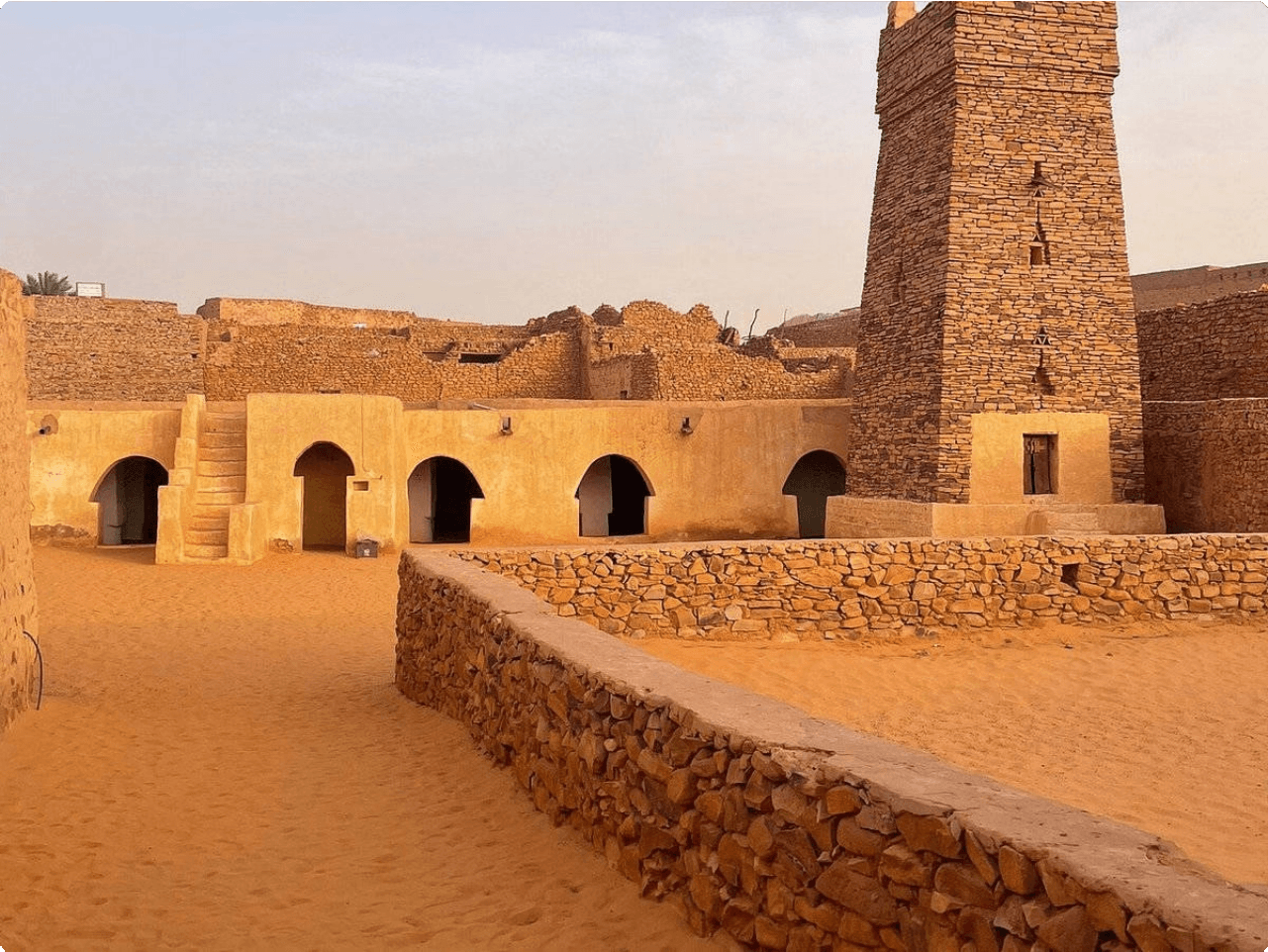
This historical mosque served as a center for religious and academic activities, and it continues to stand as a symbol of Islamic heritage in Mauritania. The mosque’s intricate carvings, geometric designs, and ancient manuscripts make it a remarkable sight for visitors interested in Islamic art and culture.
Port de Peche de Nouadhibou
The Port de Peche de Nouadhibou, also known as the Nouadhibou Fishing Port, is a vibrant and bustling hub of activity in Mauritania. Situated on the Atlantic coast, this port plays a vital role in the local fishing industry, serving as a major landing site for the region’s abundant marine resources.
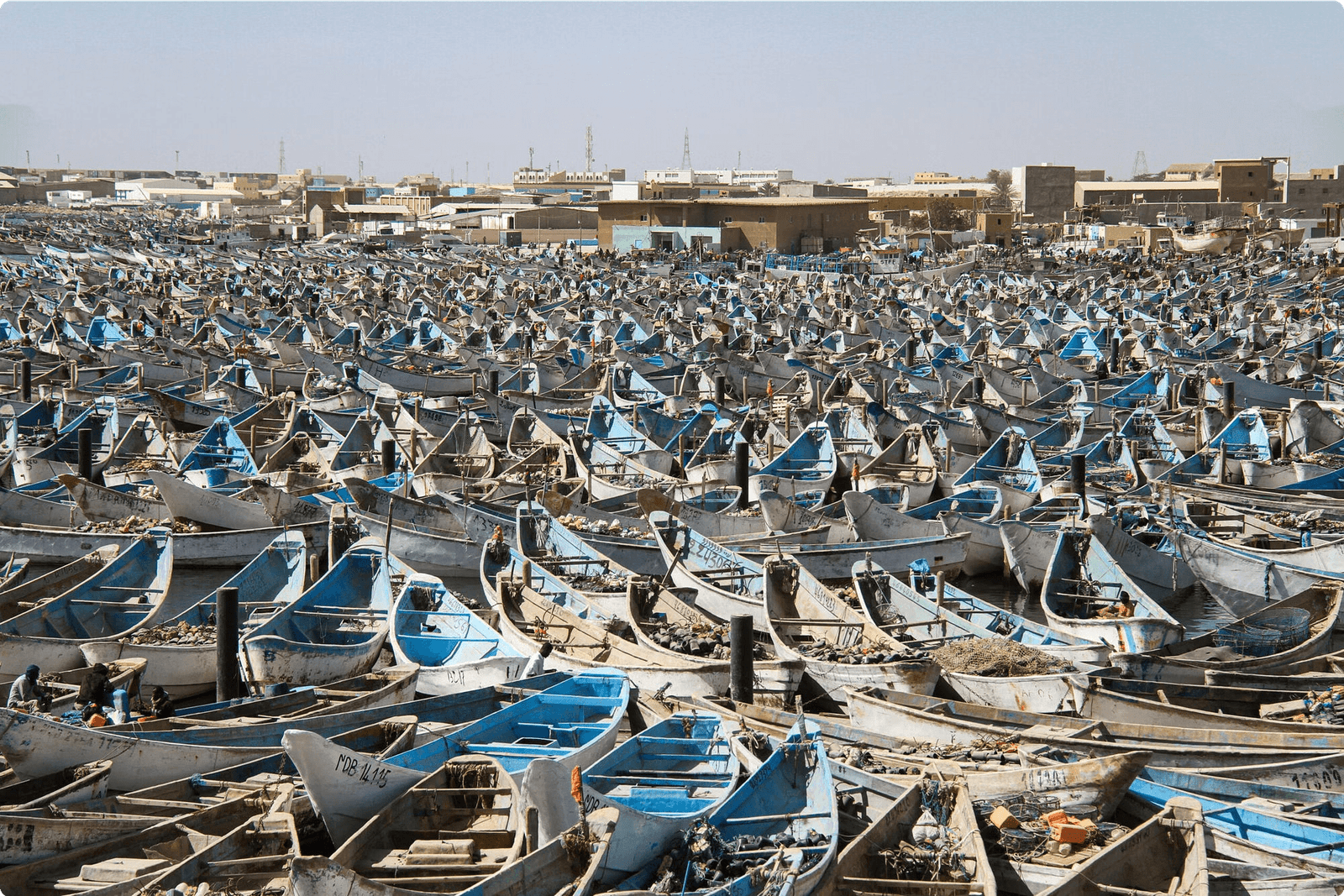
Visitors to the port can witness the traditional wooden fishing boats, known as pirogues, returning laden with their fresh catch. The air is filled with the sounds of fishermen hauling in their nets and the lively chatter of vendors welcoming the arrival of the day’s seafood bounty.
Aside from the fishing activity, the port offers captivating views of the Atlantic Ocean, making it an ideal spot for photographers and travelers seeking a glimpse of authentic Mauritanian maritime life.